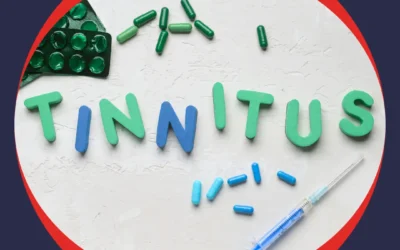Hearing Protection for Children: Essential Tips for Parents
Ensuring your child’s auditory health is vital. “Hearing protection for children” isn’t just a phrase but a responsibility for every parent. By understanding and implementing protective measures, we can prevent potential damage. In the upcoming section, we delve into the primary causes of hearing loss in kids.
Common Causes of Hearing Loss in Kids
Hearing loss in children is a concern that parents need to be aware of, as it can impact a child’s development, especially in speech and language skills. This impairment can range from mild to profound, with even mild levels potentially interfering with everyday communication. Understanding the root causes of this issue is crucial to provide timely intervention.
Statistically, around 4 out of every 1,000 newborns have hearing impairments. Alarmingly, by the age of 12, nearly 20% of children exhibit some degree of hearing loss. This can either be present from birth, known as congenital hearing loss, or develop later, termed acquired hearing loss.
Root Causes of Hearing Loss in Children
- Genetic Factors: Some children inherit hearing loss due to family history or specific genetic mutations.
- Infections: A frequent culprit is ear infections. They can damage inner ear cells and can lead to hearing deficits.
- Noise Exposure: Increasingly, children and teens have noise-induced hearing loss due to extended exposure to loud sounds from music, toys, or machinery. About 12% of children between 6 and 19 face this permanent yet entirely preventable issue.
- Head Injuries: Trauma to the head can harm the auditory nerve, diminishing hearing capacity.
- Certain Medications: Some drugs, particularly if consumed during pregnancy or early childhood, can adversely affect hearing.
- Congenital Issues: Infections during pregnancy, like cytomegalovirus or rubella, can result in hearing loss. This is more common in babies from the neonatal intensive care unit (NICU).
Understanding the Specifics of Hearing Loss
Depending on its nature and cause, hearing loss in children is categorized as:
- Sensorineural: This permanent loss occurs due to damage or malformation of the inner ear or auditory nerve.
- Conductive: Resulting from obstructions like earwax, foreign objects, fluid accumulation, or a punctured eardrum. In many cases, medical intervention or surgery can treat conductive hearing loss.
Learn more about different types of hearing loss.

The Importance of Hearing Protection for Children
Childhood is a formative period where clear hearing aids communication, learning, and socializing. Children’s ears, especially those under 5, are more susceptible to hearing damage due to their smaller ear canals, which amplify loud sounds, and their fragile inner ear structures. This makes them more vulnerable to dangers like Noise-Induced Hearing Loss (NIHL).
Understanding Noise-Induced Hearing Loss (NIHL)
Our world is abundant with loud sounds — from music players and concerts to fireworks and farm machinery. NIHL arises from persistent exposure to these sounds. The risk escalates with:
- Increasing loudness.
- Higher volume settings.
- Prolonged exposure.
- Factors like repeated exposure to sounds over 85 dBA can cause hearing loss. Notably, sounds at or below 70 A-weighted decibels (dBA) are generally safe.
Common childhood noise risks include:
- Noisy toys
- Music and movies played through headphones
- Concerts and sporting events
- Motorbikes, movie theaters, arcades
- Band and shop classes
- Firearms and power tools
Prevention: Protecting Your Child’s Hearing
To ensure the auditory health of your child, it’s essential to adopt certain preventative measures. Here are some recommended strategies:
- Limit Exposure: Minimize your child’s exposure to loud music, toys, and machinery.
- Use Hearing Protection: In environments with loud noises, ensure they wear earplugs or earmuffs. A higher noise reduction rating (NRR) is better when selecting protection. A headset rated at 35dB(A) offers more protection than foam earplugs at 18 dB.
- Address Ear Infections: They can damage hearing, so seek medical attention promptly if your child develops one.
- Regular Screenings: Regular check-ups can detect hearing issues early. Early intervention significantly improves outcomes for children with hearing loss.
If you’re concerned about your child’s hearing, consult with a hearing professional. They can test to determine the presence and cause of hearing loss.
Understanding noise hazards and fostering good hearing health practices are your best defense against potential hearing problems.
Explore more about how to protect your hearing.
Protecting Your Child’s Hearing: When and Where
Ensuring the auditory health of our children requires being vigilant about the environments they’re exposed to and implementing protective measures. Here’s a guide on when and where to use hearing protection and the best practices.
When to Use Hearing Protectors:
Introduce your children to hearing protection during activities that risk their auditory health. Some of these activities include:
- Entertainment & Events: Movies, sporting events, fireworks displays, and concerts.
- Transport & Recreation: Riding motorcycles, dirt bikes, snowmobiles, ATVs, airplanes, or tractors.
- Music: Playing instruments in a band or orchestra.
- Shooting Sports: Remember, a gunshot can be as loud as a jet engine during takeoff, risking immediate and permanent hearing damage.
Children can be at risk of noise-induced hearing loss from many activities. Since such hearing loss is preventable, here are some protective strategies:
- Model Healthy Habits: Set the example by choosing comfortable listening levels and avoiding loud noises.
- Choose Child-Friendly Protectors: Opt for earmuffs designed for children. Adjustable headband-style earmuffs could be effective for children less inclined to wear them.
- Limit Exposure: Set time constraints for loud activities.
- Select Safe Headphones: While personal devices can be loud, some earphones and headphones support healthier listening:
- Noise-Isolating Earphones: Allows listening at reduced volumes amidst loud background noises.
- Noise-canceling Headphones: They offer comfort in noisy environments but don’t guarantee safe listening levels.
- Output-Limiting Earphones: Marketed as safe for children, these limit the maximum sound level. Supervision ensures their proper use.
General Tips for Hearing Protection:
- Use Hearing Protection: Especially during loud events like concerts or races. Different earplugs and earmuffs cater to various needs, and audiologists can offer custom-made options.
- Control the Volume: Always keep music players, televisions, and other devices at a reasonable volume.
- Regular Auditory Checks: Schedule regular hearing tests and learn about school screening programs.
- Educate on Music & Reading: Help children understand the connection between hearing and learning, such as the relationship between hearing and reading skills in first grade.
Lastly, a crucial takeaway for parents: if you ever need to shout over a noise to be heard, or if your child experiences ringing or muffled hearing post-noise exposure, that environment will likely damage their hearing. Ensure they’re protected.

Choosing the Right Hearing Protection for Children: Types & Tips
Selecting the appropriate hearing protection for children is vital. It’s not just about the level of noise reduction; comfort and fit play a crucial role in ensuring that kids wear them consistently. The effectiveness of hearing protection lies in its fit. An ill-fitting protector compromises safety and can cause discomfort, making children less likely to wear them. Here’s a detailed look at the options available:
Types of Hearing Protectors:
- Earplugs
- Overview: Earplugs are small devices that fit directly into the ear canal. They can be disposable or reusable and might be more affordable than earmuffs.
- Formable Foam Earplugs: Typically crafted from soft foam, these earplugs expand upon insertion to snugly fill the ear canal. Watch a video on how to use formable earplugs.
- Pre-molded Earplugs: Made from materials like plastic, rubber, or silicone, they come in various sizes, including those suitable for children. One notable type is the uniform-attenuation or high-fidelity earplugs, which reduce sound intensity evenly across different pitches, making them ideal for events like movies and concerts.
- Canal Caps: These earplugs come with a stiff band that helps seal them in the ear canal.
- Earmuffs
- Overview: Earmuffs are padded plastic cups connected by a headband covering both ears. They’re distinct from the soft earmuffs designed for warmth.
- Fit Considerations: While earmuffs are generally easier for kids to wear than earplugs, those with glasses or certain hairstyles might find gaps between the earmuff cushion and the head, reducing effectiveness. Always ensure a proper seal.
Noise Reduction Rating (NRR):
Different protectors have varying NRRs, indicating their ability to block out noise. A higher NRR implies more noise blockage. However, it’s essential to choose an NRR appropriate for the environment. Children might frequently remove their protectors to communicate or hear surrounding sounds if it’s too high.
Combining earplugs and earmuffs can reduce noise in extremely noisy environments, such as shooting events or woodshops.
Protection from noise-induced hearing damage is entirely within our control. Parents should guide young children in selecting and using hearing protection, ensuring they’re both comfortable and practical. Remember, the best hearing protection is the one your child will wear consistently.
Explore more about hearing health.
Signs of Potential Hearing Issues in Children
Parents and caregivers must recognize the early signs of potential hearing issues. Noise-induced hearing loss, in particular, can develop over time and might not manifest immediate symptoms. Here’s a guide to help identify potential hearing problems in children:
Signs of Noise-Induced Hearing Loss in Children:
- Tinnitus: This is a ringing or buzzing sound in the ears that is common. It might be temporary or persistent.
- Muffled Hearing: After exposure to a loud noise, your child might experience a temporary reduction in hearing clarity.
- Ear Discomfort: Feelings of pain or a sensation of fullness in the ears post-loud noise exposure can indicate potential hearing issues.
- Difficulty in Understanding Speech: Children with hearing loss often struggle to comprehend conversations, especially in noisy environments.
- Increased Sensitivity: A heightened sensitivity or intolerance to loud sounds can be a symptom of noise-induced hearing loss.
Other Symptoms Suggesting Hearing Issues in Children:
- Reduced Auditory Response: If your child struggles to hear faint sounds or fails to respond to sounds they previously reacted to, it could indicate a hearing problem.
- Speech and Language Delays: Young children with hearing issues might exhibit a language and speech development delay, impacting their communication ability.
- Unclear Speech: Children with hearing loss often have difficulty articulating words clearly, leading to speech that is challenging to understand.
- 4. Behavioral Changes: If a child who previously responded to their name or familiar sounds stops doing so, it might be a cause for concern. Similarly, changes in behavior, such as increased frustration or withdrawal, can indicate hearing challenges.
It’s essential to be observant and proactive. Consider consulting a hearing professional if you notice any of these signs in your child.

Prioritizing Hearing Health
In the journey of parenthood, ensuring the health and well-being of your child is paramount, and their auditory health is no exception. From understanding the root causes of hearing loss to recognizing the signs, taking preventive measures, and choosing the right protection, every step counts in safeguarding their hearing. Remember, early detection can significantly impact the management and treatment of hearing issues. If you have concerns or notice any symptoms of hearing loss in your child, don’t hesitate. Reach out to the professionals at American Hearing and Audiology. Our expertise can provide guidance, support, and solutions to ensure your child’s auditory health thrives.



